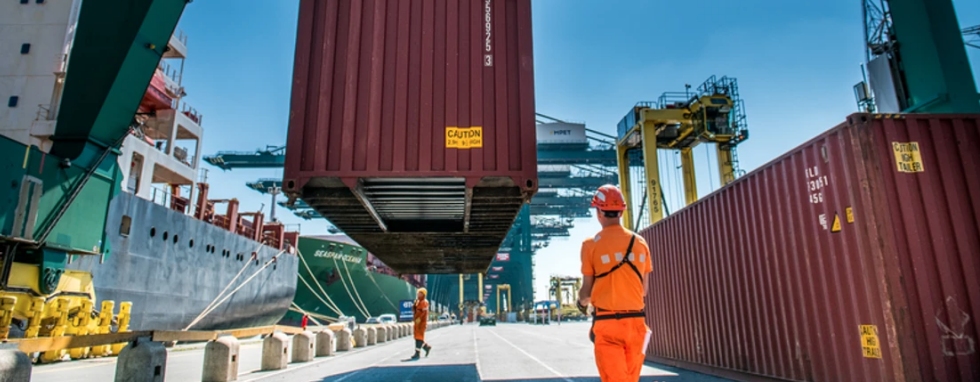|
Port of Antwerp Limits Damage During Corona CrisisTotal goods throughput down by 4.9%; first signs of recovery visibleJuly 8, 2020 - The total throughput of the Port of Antwerp fell by 4.9% in the first half of the year compared to the same period in 2019. After a strong first quarter, the port experienced a decline in the transhipment of all flows of goods, with the exception of the container sector. Despite the impact of the coronavirus crisis on global production and logistics chains and a pandemic-driven drop in demand, the port remained 100% operational. Container traffic status quoContainer traffic increased in the first quarter of the year, but felt the effects of cancelled sailings from April onwards. Nevertheless, for the period January-June 2020, container traffic recorded a slight increase of +0.4% in TEUs compared to the same period last year (with April and May 2019 as absolute record months). The number of calls made by vessels decreased, but this was compensated by a higher average volume per vessel and by additional calls on top of the normal sailing schedules. Notable climbers in this special period were the transhipment of pharmaceutical products, e-commerce and health foods. At the beginning of June, the port also welcomed the world's newest largest container ship, the HMM Algeciras with a capacity of 23,964 TEU. Slight recovery in breakbulk sector in JuneSince mid-2019, global trade issues continue to adversely affect goods flows in the conventional breakbulk sector. This has culminated in an overall 29% decrease for the period January-June compared to 2019, with inbound and outbound flows being affected to the same extent. The throughput of iron and steel, the most important freight group within this sector, experienced its best month of 2020 in June but a total decrease of 33.1% for the first six months of this year. The automotive sector was already struggling in 2019 with the introduction of stricter rules on passenger car emissions in Europe and this trend continued in 2020. From March onwards, the coronavirus crisis only compounded this situation: less exports of new European cars, less supply of new Asian cars and downtime in the second-hand market due to travel restrictions. As a result, the total RoRo throughput fell by 21.8%. Bulk cargo declined due to reduced demand for energyWhile the transhipment of coal continued to grow in the first quarter, it came to a standstill in the second quarter. This resulted in a 13.1% drop in dry bulk transhipment in January-June 2020 compared to the same period last year. This decrease is partly attributable to the growing supply of green energy, which reduced the need for coal, partly by reduced demand for coal from the steel sector and partly by a strong second quarter in 2019. Fertilisers, which represent the largest share of dry bulk volumes, grew slightly (+1%) compared to January-June 2019. Liquid bulk decreased by 7.5% compared to the first half of 2019 because of the coronavirus crisis, which wiped out demand for oil products, combined with price wars. Thanks to the gradual lifting of the coronavirus measures and the recovery of the oil price, fuel throughput increased in May and June. Moreover, chemicals decreased by 8.9% compared to the first six months of 2019, mainly due to reduced demand from the automotive sector. Seagoing vesselsOver the past six months, 6,797 seagoing vessels called at Antwerp, representing a decrease of 5.6% compared to the same period in 2019. The gross tonnage of these vessels fell by 7.9% to 193 million. Port of Antwerp grants postponement of paymentFollowing discussions with the Antwerp port community about the consequences of the coronavirus crisis, the Port Authority decided to grant a postponement of payment for the shipping and inland navigation dues and for the domain concessions. Impact coronavirus and prospectsFor the third quarter, while the Port of Antwerp is still expecting blank sailings, it is also seeing the first signs of recovery and an upturn in the European economy. The Port of Antwerp is making every effort to continue to ensure the efficient functioning of the port. ABOUT PORT OF ANTWERPAs Europe's second-largest port, the Port of Antwerp is a major lifeline for the Belgian economy: more than 300 line services to over 800 destinations ensure global connectivity. The Port of Antwerp annually handles around 238 million tonnes of international maritime freight, and is home to Europe's largest integrated chemical cluster. SOURCE: Port of Antwerp |

